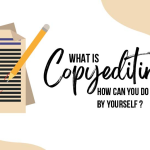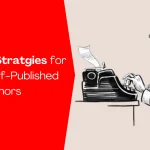The significance of book design cannot be emphasized in the enormous publishing environment, where a myriad of publications compete for readers’ attention. Book design is more than just words on a page; it’s the doorway to a reader’s imagination, inviting them to explore the world inside. For publishers and authors alike, knowing how to improve book design is essential because it has a direct impact on reader engagement and a book’s overall success.
You may also like: Top 10 Tony Ribbons Books That Inspire Success and Change
Understanding Reader Psychology
Visual Appeal
Comprehending the psychology of readers is vital for those seeking to captivate and sustain the interest of their readership. Appealing to the eye is important in this endeavor. artistically beautiful images naturally captivate humans.
Visual components, such as eye-catching colors, powerful pictures, or simple designs, can make or break a reader’s interest. Making use of visually appealing layouts, fonts, and images can improve the content’s overall enjoyment, retention, and comprehension.
Content writers may effectively engage with their audience and create more engaging reading experiences by knowing the psychological effects of visual aspects.
Emotional Connection
Understanding Reader Psychology is crucial for effective communication, and at the heart of it lies Emotional Connection. It’s the invisible thread that binds readers to your words, igniting their curiosity, empathy, and ultimately, their loyalty.
When readers feel understood, valued, and emotionally resonant with your content, they’re more likely to engage, share, and return for more. Emotional Connection transcends mere information delivery; it taps into the fundamental human need for connection and belonging.
By crafting content that speaks directly to readers’ emotions, aspirations, and experiences, you create a powerful bond that transcends the digital divide, fostering enduring relationships built on trust and understanding.
You may also like: The Rise of Self-Publishing and What it means for authors
Elements of Appealing Book Design
Cover Design
Professional Design vs DIY Options
Investing in professional cover design can elevate the visual appeal of a book design and signal quality to potential readers. However, with the rise of self-publishing platforms, many authors opt for DIY covers. While cost-effective, DIY covers should still prioritize quality and professionalism.
Importance of High-Quality Images
Images play a significant role in cover design, conveying themes, moods, and characters at a glance. High-resolution images are essential for ensuring clarity and visual impact.
Use of Symbolism
Symbolism in cover design can add layers of meaning and intrigue, inviting readers to delve deeper into the story’s themes and messages.
You may also like: The Importance of Professional Editing in Self Publishing
Choosing the Right Typography
Font Styles and Readability
The choice of fonts can greatly affect readability and comprehension. Sans-serif fonts are commonly used for digital reading due to their clarity, while serif fonts are preferred for print due to their traditional elegance.
Consistency Throughout the Book
Maintaining consistency in typography across the book reinforces the overall book design aesthetic and enhances the reading experience.
Optimizing Layout and Formatting
White Space and Balance
White space, or negative space, is essential for giving elements room to breathe and creating a sense of balance in the layout. Proper balance ensures that the reader’s focus is not overwhelmed by clutter.
Chapter Headings and Subheadings
Clear and distinct chapter headings and subheadings guide the reader through the text and help organize the content for easy navigation.
Paragraph Spacing
Ample paragraph spacing improves readability by preventing the text from appearing dense and overwhelming.
You may also read: HEA Meaning in Books, Texts, and Pop Culture Explained
Utilizing Color Psychology
Emotional Impact of Colors
Different colors evoke different emotions and associations. Understanding color psychology can help authors and designers choose palettes that complement the book’s themes and resonate with the target audience.
Harmony and Contrast
Balancing harmonious colors with strategic contrasts creates visual interest and draws attention to key elements of the design.
Enhancing Reader Experience
Interactive Elements
Incorporating interactive elements, such as QR codes or augmented reality features, can enhance the reading experience and create opportunities for deeper engagement with the content.
Incorporating Illustrations and Graphics
Illustrations and graphics can add depth and visual appeal to a book, particularly in genres like children’s literature or graphic novels.
You may also like: Top 10 Best Biographies of All Time
Testing and Feedback
Importance of Beta Readers
The importance of beta readers in the field of book design cannot be emphasized. They are the priceless beta testers and commentators, providing an important viewpoint on how readers engage with the book’s layout.
Beta readers provide insights that can improve the book’s design and act as a link between the author’s vision and the reader’s experience. Their input is crucial in pointing out possible problems with readability, design, and general aesthetic appeal so that the finished product appeals to the intended market.
Accepting beta readers as vital collaborators during the design phase improves the overall readability as well as the aesthetic appeal.
Gathering Feedback for Improvements
The process of a book design from conception to the hands of the reader is a delicate ballet between artistic expression and practicality. Securing input for enhancements is an essential phase in this process.
Under the general heading of “Testing and Feedback,” designers work in tandem with publishers, writers, and even prospective readers to improve their works. This technique is about creating an experience that genuinely connects with the viewer; it goes beyond just aesthetics.
Accepting criticism allows designers to improve typography, layout, and cover art, which in turn increases the book’s appeal and strengthens the bond with its audience.
You may also like: Insights from Bestselling Authors: The Art of Storytelling
Tools and Resources
In the field of book design, the appropriate software can elevate an ordinary layout to a remarkable one. Software designed with the user’s eye in mind is essential for drawing in readers.
With the help of programmes like Adobe InDesign, designers can easily create visually attractive pages thanks to its full set of tools for layout, typography, and image manipulation. Furthermore, programmes like as Canva offer an easy-to-use interface for novice users, complete with pre-made themes and simple editing tools.
Selecting the appropriate software can greatly improve the attractiveness of your book design, whether you’re an experienced professional or just getting started. This will eventually draw in and hold the attention of your audience.
Online Communities and Forums
In the vibrant world of book design, online communities and forums stand as invaluable tools and resources for aspiring designers and seasoned professionals alike.
These digital hubs serve as bustling marketplaces of ideas, where creators converge to share insights, seek feedback, and showcase their latest works. From platforms like Reddit’s r/BookDesign to specialized forums hosted by design associations, the wealth of knowledge and camaraderie fostered within these spaces is unparalleled.
Engaging with such communities not only exposes designers to diverse perspectives but also provides a fertile ground for honing skills, staying abreast of industry trends, and finding inspiration to craft visually captivating books that resonate deeply with readers.
Future Trends
Digital vs Print Design
The ongoing discussion about print versus digital book design continues to influence how publishing will develop in the future. Print design preserves the tactile, real experience that many readers value, whereas digital design adds interactivity, multimedia components, and dynamic layouts.
The future, though, appears to be a well-balanced amalgam of the two realms. As technology develops, we’re seeing creative solutions that combine the greatest aspects of print and digital design to create immersive reading experiences that enthrall and engage readers across a range of media.
The secret to improving book design and making it more relevant to the constantly changing tastes of modern readers is this mix.
You may also like: Strategies for Effective Book Recommendations in Publishing
Personalization and Customization
Future developments in book design clearly indicate that customisation and personalization will be incorporated. Readers are tired of one-size-fits-all layouts and want experiences that are customized to their tastes.
Customization enables adaptive changes to font size, alignment, and color schemes to accommodate different readers’ preferences and visual comfort levels. Customization, on the other hand, goes one step beyond by enabling readers to select story trajectories, cover designs, and even images, turning every book into a singular experience.
Publishers and designers may create stronger relationships with readers and increase engagement and happiness in the dynamic world of literary consumption by adopting these trends.
Conclusion
In a world inundated with content, the visual allure of a book plays a crucial role in capturing the reader’s attention and igniting their imagination. By understanding the principles of appealing book design and implementing thoughtful strategies, authors and publishers can create books that not only look beautiful but also resonate deeply with readers, fostering a lasting connection that transcends the pages.
Frequently Asked Questions
Book design serves as the first impression of a book, influencing whether readers choose to pick it up or pass it by. A visually appealing design can capture attention and intrigue, drawing readers into the story.
While professional design can enhance the quality of a book cover, many authors successfully design their own covers using DIY tools and resources. The key is to prioritize quality and convey the essence of the book effectively.
When choosing fonts, consider factors such as readability, genre, and target audience. Sans-serif fonts are generally preferred for digital reading, while serif fonts lend a traditional elegance to print books.
While staying informed about design trends can be beneficial, it’s essential to prioritize timeless elements and themes that resonate with the book’s content and target audience. Strive for a balance between current trends and enduring appeal.
Negative feedback provides an opportunity for growth and improvement. Take constructive criticism into account, analyze what aspects of the design may be hindering reader engagement, and be open to making adjustments to enhance the overall appeal of the book.
















